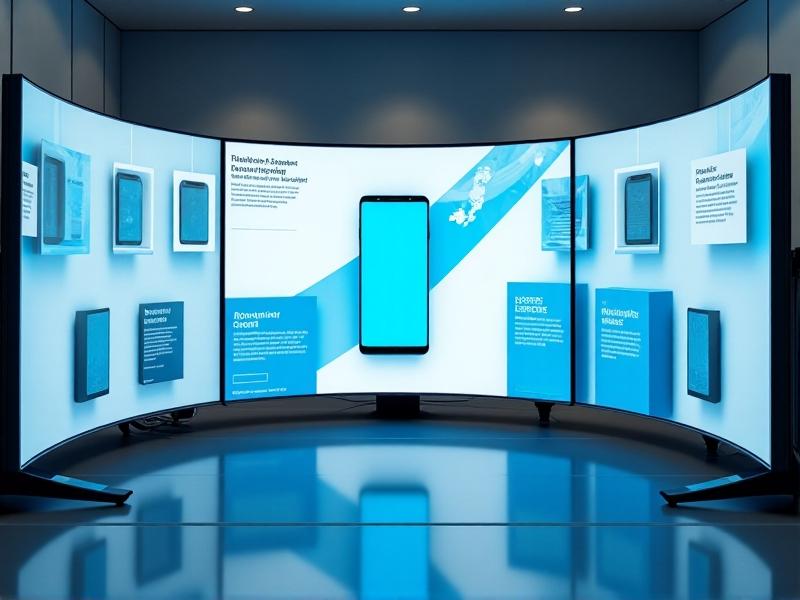Brand Building: Creating a Signature Style in a Crowded Market
Understanding the Competitive Landscape

Before carving out a signature style, brands must first dissect the market they operate in. A crowded marketplace isn’t just a challenge—it’s an opportunity to identify gaps and unmet needs. Start by analyzing competitors: What visual elements, messaging, or values do they emphasize? Tools like SWOT analysis or consumer surveys can reveal patterns in customer preferences and pain points. For instance, if competitors in the skincare industry focus heavily on “natural” ingredients but overlook sustainable packaging, this becomes a potential differentiator. Understanding the landscape isn’t about imitation; it’s about strategic contrast.
Data-driven insights are critical here. Social listening tools, Google Analytics, and industry reports can uncover trends and consumer behaviors that aren’t immediately obvious. Look beyond direct competitors to adjacent industries; a tech startup might draw inspiration from fashion brands known for bold aesthetics. The goal is to map where your brand can occupy a unique space. This groundwork ensures your signature style isn’t just distinctive but also resonant with what your audience craves but hasn’t yet found.
Defining Your Brand’s Core Identity

A brand’s core identity is its DNA—the mission, vision, and values that guide every decision. Without clarity here, efforts to create a signature style risk becoming disjointed. Begin by articulating your brand’s purpose: Why does it exist beyond profit? Patagonia’s commitment to environmental activism, for example, informs everything from product design to marketing campaigns. This authenticity becomes a magnet for like-minded consumers.
Next, define your brand’s personality. Is it playful or authoritative? Rebellious or reassuring? This personality should permeate all touchpoints, from website copy to customer service interactions. Mailchimp’s quirky tone of voice, filled with whimsical humor, sets it apart in the monotonous world of email marketing. Consistency in personality builds recognition, making your brand feel like a trusted friend rather than a faceless entity.
Crafting a Visual Language That Speaks Volumes

Visual identity is the most immediate expression of a brand’s essence. Colors, typography, and imagery should work in harmony to evoke specific emotions. Consider Coca-Cola’s iconic red—a color synonymous with energy and excitement. Similarly, Apple’s use of clean lines and white space communicates sophistication and innovation. These choices aren’t arbitrary; they’re rooted in psychological principles and cultural associations.
Investing in custom design elements can further distinguish your brand. Dropbox’s shift from generic file-storage visuals to whimsical illustrations infused its platform with warmth and approachability. Even small details matter: The curvature of a logo or the spacing between letters can subconsciously influence perceptions. Regularly audit your visual assets to ensure they align with evolving brand goals while maintaining recognizability.
Consistency: The Glue That Holds Your Brand Together

Consistency transforms a collection of elements into a cohesive brand experience. Whether a customer interacts with your social media, product packaging, or in-store signage, they should feel a sense of familiarity. Starbucks exemplifies this: Its green mermaid logo, handwritten menu boards, and earthy interior design create a unified ambiance globally. Inconsistencies, however minor, can erode trust and dilute brand equity.
Develop a comprehensive brand guideline documenting logo usage, color codes, tone of voice, and more. Train teams across departments to adhere to these standards. Automation tools like Canva Templates or Adobe Libraries can streamline this process. Remember, consistency doesn’t mean rigidity—it’s about maintaining core elements while allowing flexibility for creative campaigns or seasonal updates.
Storytelling as a Strategic Tool
Humans are wired for stories. A compelling narrative can turn abstract values into relatable experiences. TOMS Shoes built its identity around the “One for One” story, connecting each purchase to a donation. This narrative isn’t just a marketing tactic—it’s a core part of their brand ethos. Stories create emotional hooks, making your brand memorable in a sea of alternatives.
Effective storytelling requires authenticity. Share behind-the-scenes glimpses of your team, customer success stories, or the inspiration behind products. GoPro’s user-generated content strategy leverages customers’ adventures to reinforce its image as a brand for thrill-seekers. Use multimedia—videos, podcasts, blogs—to tell these stories in ways that resonate with different audience segments.
Leveraging Unique Selling Propositions (USPs)
Your USP is the lighthouse guiding customers to your brand. It answers the question: “Why should I choose you?” Dollar Shave Club disrupted the razor market with a USP centered on convenience and affordability, delivered through a subscription model. To identify your USP, analyze what you do better than anyone else—whether it’s unrivaled customer service, cutting-edge technology, or ethical sourcing.
Once defined, integrate your USP into every aspect of your brand. If speed is your USP, ensure your website loads quickly, your customer support responds instantly, and your logistics partners prioritize delivery times. Warby Parker’s “Home Try-On” program directly supports its USP of risk-free shopping, reinforcing its position as a customer-centric brand.
Sustaining Relevance in an Ever-Changing Market
Markets evolve, and so must brands—but without losing their essence. LEGO’s journey from physical bricks to digital gaming and movies shows how heritage brands can expand while staying true to their core. Monitor cultural shifts, technological advancements, and consumer expectations. Engage in continuous dialogue with your audience through surveys or social media to stay attuned to their changing needs.
Rebranding should be strategic, not reactive. When Old Spice revitalized its image with humorous ads targeting younger demographics, it retained its classic product lines but modernized its messaging. Balance innovation with tradition, ensuring that updates enhance rather than erase what makes your brand unique.








